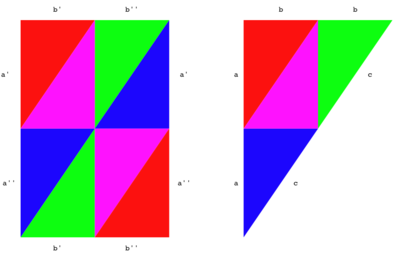Riemann-Hurwitz formula: Difference between revisions
Jump to navigation
Jump to search
imported>Michael Hardy (proper bolding) |
imported>Michael Hardy (links to eponyms) |
||
| Line 1: | Line 1: | ||
In [[algebraic geometry]] the '''Riemann-Hurwitz formula''' states that if ''C'', ''D'' are smooth [[algebraic curve]]s, and <math>\scriptstyle f:C\to D</math> is a [[finite map]] of [[degree]] ''d'' then the number of [[branch points]] of ''f'', denoted by ''B'', is given by | In [[algebraic geometry]] the '''Riemann-Hurwitz formula''', named after [[Bernhard Riemann]] and [[Adolf Hurwitz]], states that if ''C'', ''D'' are smooth [[algebraic curve]]s, and <math>\scriptstyle f:C\to D</math> is a [[finite map]] of [[degree]] ''d'' then the number of [[branch points]] of ''f'', denoted by ''B'', is given by | ||
: <math>2 (\mbox{genus}(C)-1)=2d(\mbox{genus}(D)-1)+B. \, </math> | : <math>2 (\mbox{genus}(C)-1)=2d(\mbox{genus}(D)-1)+B. \, </math> | ||
Revision as of 17:58, 28 July 2007
In algebraic geometry the Riemann-Hurwitz formula, named after Bernhard Riemann and Adolf Hurwitz, states that if C, D are smooth algebraic curves, and is a finite map of degree d then the number of branch points of f, denoted by B, is given by
Over a field in general characteristic, this theorem is a consequence of the Riemann-Roch theorem. Over the complex numbers, the theorem can be proved by choosing a triangulation of the curve D such that all the branch points of the map are nodes of the triangulation. One then considers the pullback of the triangulation to the curve C and computes the Euler characteristics of both curves.


